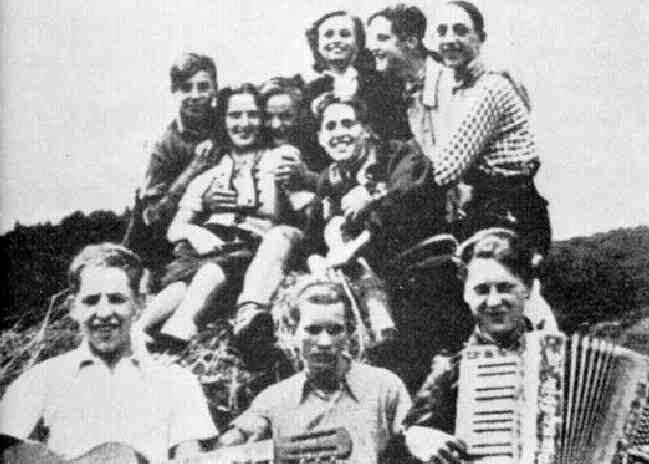
Figure 1.--I am not sure, but I think this is another image of the Edelweiss Pirates. This is an image of a country outing. |

|
The Hitler Youth while dominating the loyalties of most German children, was not totally effective. There were exceptions. The early Hitler Youth has seized open the rebeliousness of youth, but once the NAZIs were firmly entrenched in power, such rebeliouness was discouraged. Young people were expected to conform to NAZI values and expectations. This was a factor in groups that appeared during World War II. They can not be precisely called resistance groups, but they did reflect varying levels of opposition to the NAZI regime and NAZI ideology. One of the most notable youth opposition efforts was the White Rose which might be called a resistance movement. Others were the Swing Kids and the Edelweiss Pirates. In each case, they soon attracted the notice of the Gestapo and were relentlessly persecuted. As much of the oppsition occurred during the War, opposition to the War was an important factor. With the White Rose, German attrocities in the East appears to have been a major concern.
The Hitler Youth while dominating the loyalties of most German children, was not totally effective. There were exceptions. The early Hitler Youth has seized open the rebeliousness of youth, but once the NAZIs were firmly entrenched in power, such rebeliouness was discouraged. Young people were expected to conform to NAZI values and expectations. This was a factor in groups that appeared during World War II. They can not be precisely called resistance groups, but they did reflect varying levels of opposition to the NAZI regime and NAZI ideology. In each case, they soon attracted the notice of the Gestapo and were relentlessly persecuted. As much of the oppsition occurred during the War, opposition to the War was an important factor. With the White Rose, German attrocities in the East appears to have been a major concern.
Some German youth sought camaraderie in unofficial associations. No other official group was allowed other than the Hitler Youth. There were, however unofficial groups more like informal cliques. One such group was the Edelweiss Pirates. The Edelweiss Pirates were infomal associations of working-class youths. There were no uniforms, but they were easily recognizable by their colorful dress (shorts, checkered shirts and neck scarves) and irreverent behavior. The Edelweiss Pirates were known to fight with Hitler Youth boys units as they patrolled parks and other areas. Some such confrontations reportedly even resulted in gunfire The Pirates became increasingly political as the War progressed. The Gestapo arrested many of them and some were executed. [Holmes]
The Swing Kids were teenagers who developed an interest in jazz music. Swing is an American term adopted by Whites for jazz as jass was seen as Black music. Jazz was anathema to the NAZIs. Not only was it music of foreign origins, butit was associated with rebelliouness and Blcks. The Swing Kids not onlu liked jazz, bit other aspects of American culture. Under Heinrich Himmler direct irders, the Gestapo began arresting many of the Swing Kids. An American movie was made about them--"Swing Kids". I know of no German film.
One of the most notable youth opposition efforts was the White Rose which might be called a resistance movement. ( Die Weiße Rose ). Some of the members were apparentky involved in the dj 1.11 movement, but we cannot yet confirm this. The NAZIs banned dj 1.11 in 1933 so the time frame does not seem to mstch up. It is not known why the group called itself "The White Rose". White Rose member Hans Scholl under Gestapo questioning said the name was chosen arbitrarily based on a Spanish novel, but this may not have been the case. Hans Scholl and Alexander Schmorell were students at the University of Munich. Scholl and Schmorell had a close-knit group of friends in and around the university who shared similar values and interests in art, music, and philosophy. These values included a hatred of Hitler and the NAZIs. Another individual included Christoph Probst (a soldier and father of three children). Willi Graf was a medical student and devout Catholic who had refused to join the Hitler Youth. [HBC note: Boys who did not join the Hitler Youth might have trouble getting into a secondary school, let alone into university. I'm not sure of the details on his background.] Sophie Scholl joined her brother. Professor Kurt Huber who lectured on philosophy also joined the group. The group wrote and distributed anti-NAZI leaflets. They were mailed to scholars, medics, and pub-owners. The White Rose was active for only a few months (summer 1942 through February 1943) when the members were arrested by the Gestapo. The three were tried in a court presided over by the top justice of Hitler's People's Court who personally oversaw the trial (February 22, 1943). Within hours of the gilty verdict, the three were executed.
Holmws, R. Blair, and Alan F. Keele, eds. When Truth Was Treason: German Youth against Hitler (Chicago, 1995).
Navigate the Boys' Historical Clothing Web Site:
[Return to Main German youth resistance page]
[Return to Main World War II country resistance page]
[Return to Main World War II resistance page]
[About Us]
[Biographies]
[Campaigns]
[Children]
[Countries]
[Deciding factors]
[Diplomacy]
[Geo-political crisis]
[Economics]
[Home front]
[Intelligence]
[POWs]
[Resistance]
[Race]
[Refugees]
[Technology]
[Totalitarian powers]
[Bibliographies]
[Contributions]
[FAQs]
[Images]
[Links]
[Registration]
[Tools]
[Return to Main World War II page]
[Return to Main war essay page]
[Return to CIH Home page]
